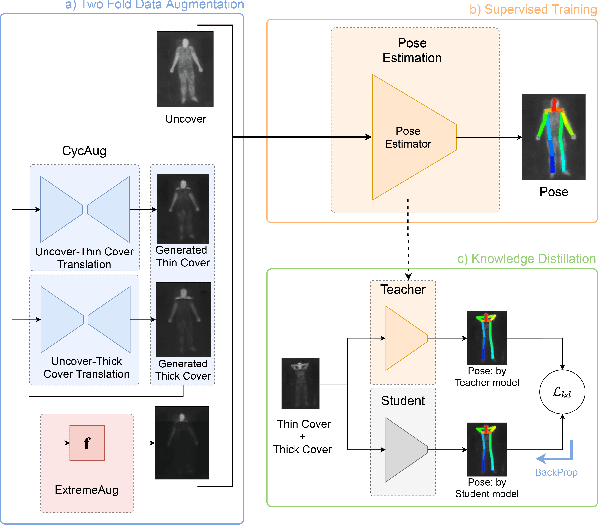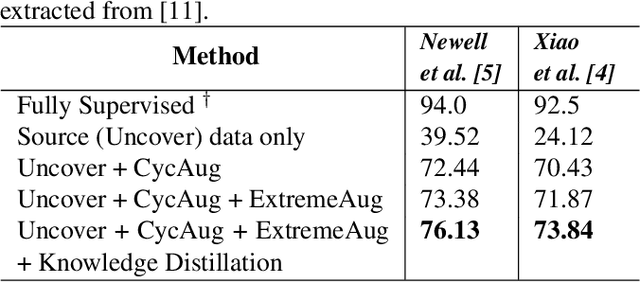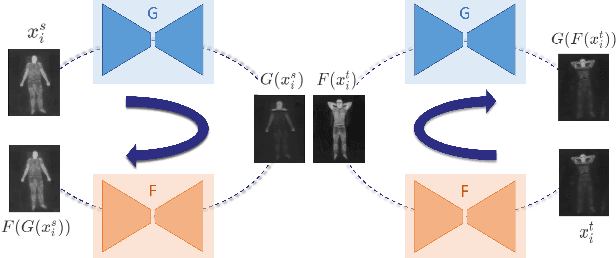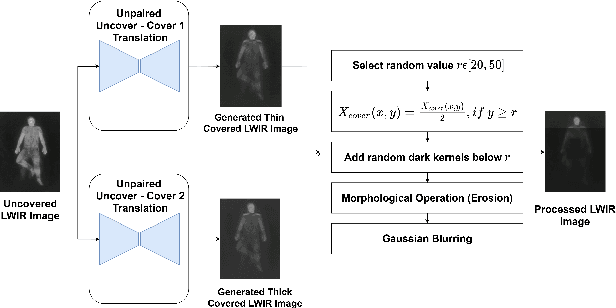Towards Accurate Cross-Domain In-Bed Human Pose Estimation
Paper and Code
Oct 07, 2021



Human behavioral monitoring during sleep is essential for various medical applications. Majority of the contactless human pose estimation algorithms are based on RGB modality, causing ineffectiveness in in-bed pose estimation due to occlusions by blankets and varying illumination conditions. Long-wavelength infrared (LWIR) modality based pose estimation algorithms overcome the aforementioned challenges; however, ground truth pose generations by a human annotator under such conditions are not feasible. A feasible solution to address this issue is to transfer the knowledge learned from images with pose labels and no occlusions, and adapt it towards real world conditions (occlusions due to blankets). In this paper, we propose a novel learning strategy comprises of two-fold data augmentation to reduce the cross-domain discrepancy and knowledge distillation to learn the distribution of unlabeled images in real world conditions. Our experiments and analysis show the effectiveness of our approach over multiple standard human pose estimation baselines.
 Add to Chrome
Add to Chrome Add to Firefox
Add to Firefox Add to Edge
Add to Edge